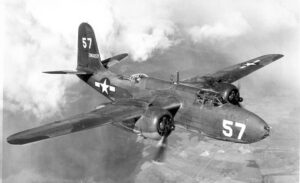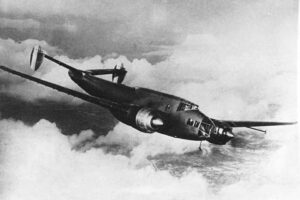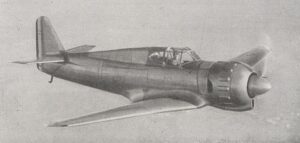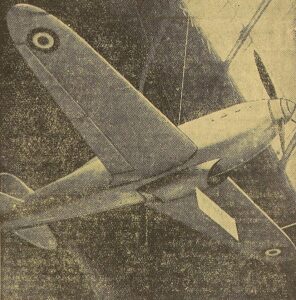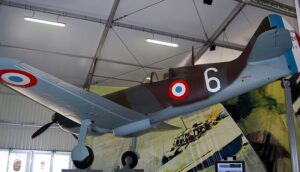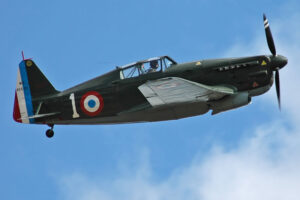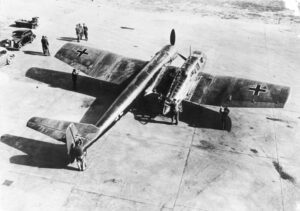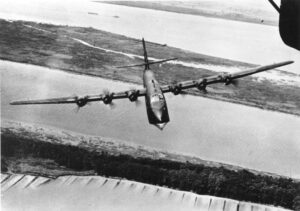Time Period: Interwar Period, World War II
Country of Origin: Germany
Type: Glider (Troops)
Manufacturer: DFS (Deutsche Forschungsanstalt für Segelflug)
DFS 230 Aircraft Overview
The DFS 230 was a German transport glider used by the Luftwaffe during World War II. Developed by the Deutsche Forschungsanstalt für Segelflug (DFS), it was designed to provide the German military with a means of delivering troops, equipment, and supplies behind enemy lines without the need for powered aircraft.
The DFS 230 had a sleek and streamlined design, featuring a high-wing monoplane configuration with a fixed landing gear. It was constructed primarily of wood and fabric to minimize weight and maximize cargo capacity. The glider could accommodate up to ten fully equipped troops or a variety of cargo, including vehicles, artillery pieces, and ammunition.
One of the most notable features of the DFS 230 was its ability to be towed into the air by powered aircraft, such as the Junkers Ju 52 or the Heinkel He 111. Once airborne, the glider could release its towline and glide to its destination, utilizing its aerodynamic design and large wingspan to achieve efficient and stable flight.
The DFS 230 saw extensive use during the early stages of World War II, particularly during the invasions of Poland, Norway, Belgium, and the Netherlands. It was also used in the airborne assault on the island of Crete in 1941, where it played a significant role in capturing key objectives and securing the island.
Despite its effectiveness as a transport glider, the DFS 230 faced challenges during its operational service, including vulnerability to enemy anti-aircraft fire and fighter interception, especially during landing and takeoff. However, its ability to deliver troops and supplies to remote or inaccessible areas without the need for powered aircraft made it a valuable asset for the Luftwaffe throughout the war.
DFS 230 B-1 Specifications
- Crew: 1
- Capacity: 9 equipped troops + 270 kg (600 lb) cargo
- Length: 11.24 m (36 ft 11 in)
- Wingspan: 21.98 m (72 ft 1 in)
- Height: 2.74 m (9 ft 0 in)
- Wing area: 41.3 m2 (445 sq ft)
- Empty weight: 860 kg (1,896 lb)
- Gross weight: 2,040 kg (4,497 lb)
- Max takeoff weight: 2,100 kg (4,630 lb)
DFS 230 B-1 Performance
- Never exceed speed: 290 km/h (180 mph, 160 kn)
- Maximum towing speed: 209 km/h (130 mph)
- Normal towing speed: 180 km/h (112 mph)
- Maximum glide ratio: 1:18 (empty), 1:11 (fully loaded)
DFS 230 B-1 Armament
Guns (optional):
- 1 x 7.92 mm (0.312 in) MG 15 machine gun on a manually aimed mounting aft of the cockpit
- 2 x 7.92 mm (0.312 in) MG 34 fixed forward firing machine guns attached to the forward fuselage sides.
DFS 230 Image Gallery
More Luftwaffe Aircraft
The Luftwaffe, the German air force during World War II, fielded a diverse range of aircraft that played critical roles in the conflict. These aircraft encompassed fighters, bombers, reconnaissance planes, transport aircraft, and more. Explore others:
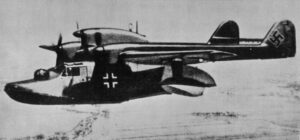
Blohm & Voss BV 138 Seedrache
The Blohm & Voss BV 138 Seedrache was a trimotor flying boat used by the Luftwaffe for seaborne maritime patrol and naval reconnaissance.
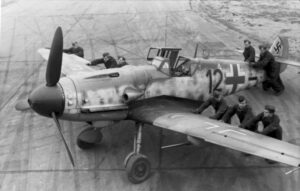
Messerschmitt Bf 109
The Messerschmitt Bf 109 is a German fighter aircraft and the backbone of the Luftwaffe’s force during World War II.
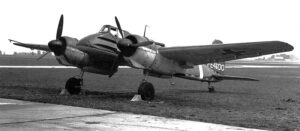
Henschel Hs 129
The Henschel Hs 129 was a round-attack aircraft fielded by the German Luftwaffe and used in Tunisia and on the Eastern Front.
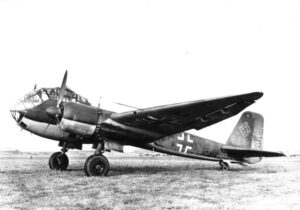
Junkers Ju 188 Rächer
The Junkers Ju 188 Rächer was a German high-performance medium bomber used by the Luftwaffe during World War II.
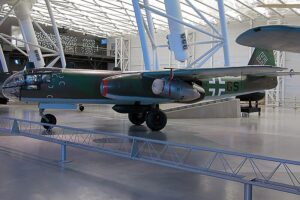
Arado Ar 234 Blitz
The Arado Ar 234 was a German jet-powered bomber produced by Arado Flugzeugwerke and used during the last years of WW2.



